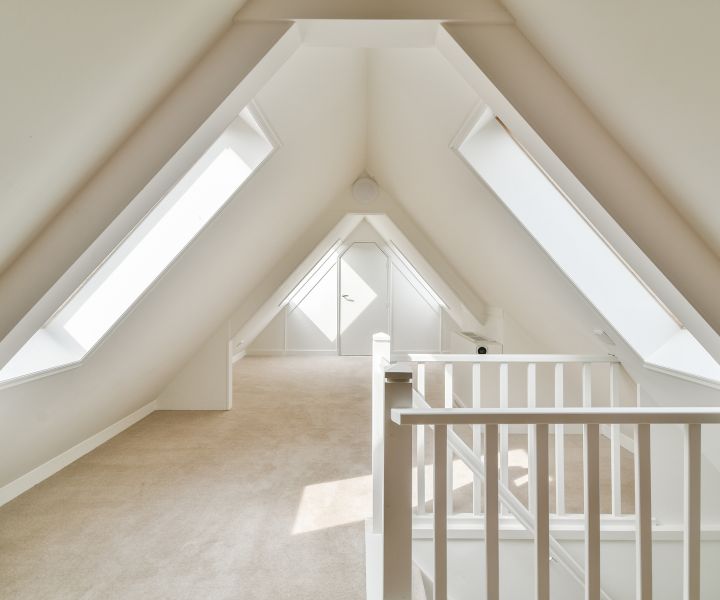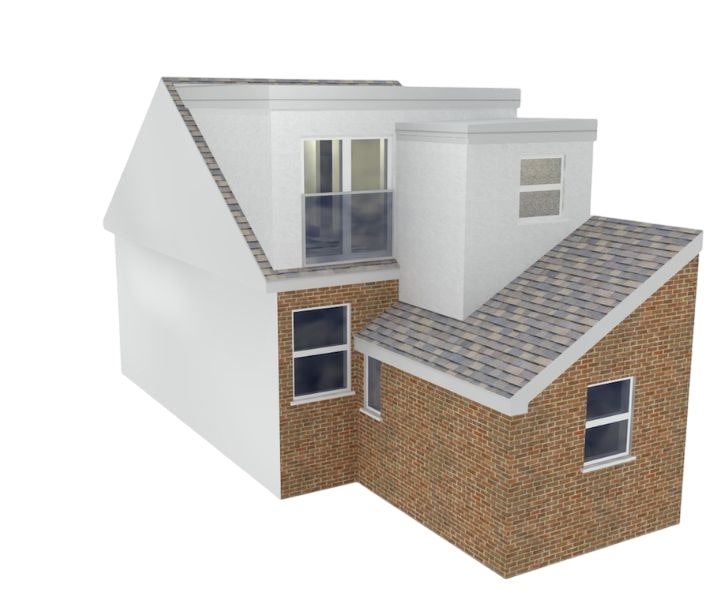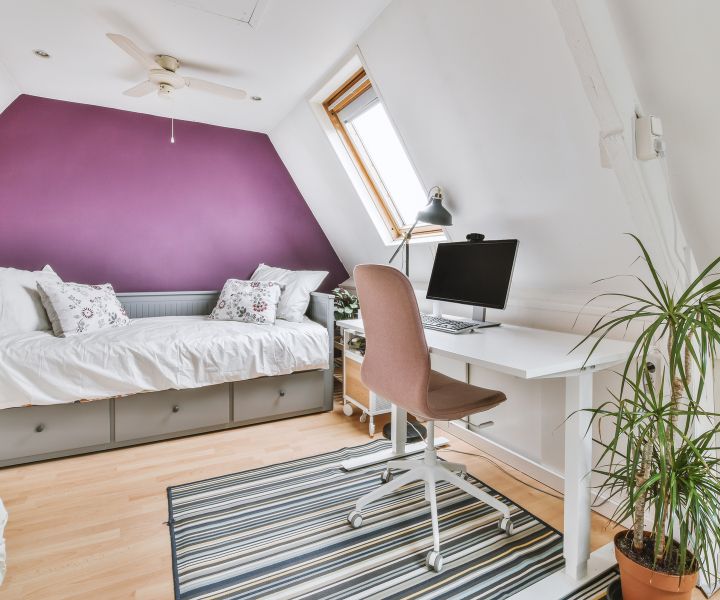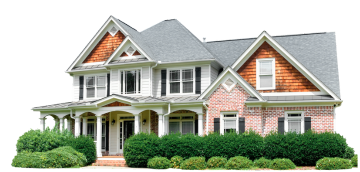There is a lot magical about turning the dusty, unused attic into a warm, light filled room with a view. Over the past decades, the UK has witnessed a surge in loft conversion, with dormer loft conversions topping the list for their practicality, spaciousness and architectural charm.
A study by Nationwide Building Society found that an extra bedroom and bathroom is something easily achieved through a dormer attic conversion which can add £25000 to £45000 in value in many areas.
But numbers aside, a loft dormer conversion isn’t just about bricks, beams or square meters. It’s about lifestyle, creating a peaceful retreat, a new room for a growing family or even that home office you’ve always dreamed of.
Let’s dig deep into everything you need to know about a dormer loft conversion, and whether it’s the upgrade your home has been waiting for.
What is exactly Dormer Loft Conversion?
Well, a dormer loft conversion is a structural extension that projects vertically from the plane of a sloping roof. It creates additional headroom and floor space within your existing attic. Imagine your cramped loft becoming a beautifully lit, fully functional room; this is what dormers are built to deliver.
They are typically constructed at the rear of the house but can also be built at the front or side, depending on planning permission and your property’s orientation. In essence, this type of loft conversion with a dormer breaks open the restrictive ceiling, giving your home a breath of fresh air.
Types of Dormer Loft Conversion
Just like homes, dormers come in all shapes and sizes. The style you choose depends on your property’s layout, the space you want, and the aesthetic you’re after. Here are the most common types:
-
Flat roof dormer loft conversion
This is by far the most common, and for good reason. A flat dormer offers the biggest bang for your buck when it comes to internal space. It has a flat top and straight vertical walls, which means no awkward angles eating into your room. Everything feels open and square, just like a regular room elsewhere in your home.
You could turn this space into a spacious double bedroom, an office with bookshelves all around, or even a nursery with soft lighting and warmth. It’s perfect for growing families or anyone who wants that extra bit of breathing room.
Why it works so well: It feels less like a loft and more like a natural part of your house; nothing makeshift about it.
Ideal for: Terraced houses and homeowners who want to maximise space without changing the home’s front appearance.

-
Gable front dormer
With its beautiful pitched roof and charming triangular front, this dormer looks like it belongs in a storybook. It’s not just functional; it adds serious character to your home. While it doesn’t offer as much floor space as the flat roof style, its charm is undeniable. Iot brings architectural elegance and suits older, more traditional homes beautifully.
Imagine a cosy bedroom tucked under the pitched roof, complete with a window seat where you can sip tea and read on a rainy day. That’s the kind of feeling a gable dormer brings.
A touch of timeless beauty: If your home has history, this dormer honours it.
Ideal for: Homes with cottage style or period architecture, where aesthetics matters just as much as space.

-
Shed dormer
This one is often described as the gentler sibling of the flat-roof dormer. The roof slopes in one gentle direction, following the same line as your home’s existing roof, but a shallower angle.
It still gives you more headroom and light, just not quite as much as a flat roof dormer. But, what you gain is a more subtle appearance from the outside, blending in with your roof rather than standing out.
Picture a peaceful loft retreat where you can work quietly, do yoga in the mornings, or simply escape the chaos downstairs. That’s the kind of mood a shed dormer sets.
Lowkey & Lovely: It’s about adding space without making a big statement from the street.
Ideal for: Semi-detached or detached homes where homeowners want space inside but a softer look outside.

-
Full-width dormer
Now we are talking about transformation. A full width dormer extends across the entire back of your home, offering a generous, light filled room. This isn’t just a conversion, it’s a whole new floor of your house.
Think about what you could do with all that space: A master bedroom with an ensuite, a guest suite, a teenage den, or even a lounge with big windows that look out over the garden. The possibilities feel endless.
Big, Bold, & Beautiful: When you need space to breathe, stretch and live fully.
Ideal for: Large homes or those who want a complete top-floor transformation.

-
L-shaped dormer
This one is a clever solution, especially for Victorian & Edwardian homes that have existing rear extensions. The dormer is shaped like an “L”, connecting the main roof to the rear addition and creating a wrap-around space. What’s magical about this type is its flexibility. You could have one large bedroom and a separate bathroom or two bedrooms. It will be great if your family is growing or if you want to rent out the space.
Heritage meets modern living: It respects the charm of older homes while making them more livable.
Ideal for: Period properties with a back addition, particularly in cities like London or Manchester.

-
Small dormer loft conversion
Sometimes, a little change can bring a lot of joy. A small dormer doesn’t offer tons of space, but it can totally transform the look and feel of your loft. These mini dormers let in extra light and make your attic feel less boxed in. You might use the space for a reading corner, a dressing area, or just to make your loft feel less cramped.
Imagine sitting by a small window, sunlight pouring in as you write in your journal or sip your morning coffee. That’s the emotional power of even a little dormer.
Small in size, Big in impact: It’s not about how much space you gain; it’s about how much more you enjoy it.
Ideal for: Homeowners who want light, charm, or a break in their roofline without major structural changes.

Benefits of Dormer Loft Conversion
It’s not just an extra room; it’s a whole new chapter in how you live. See yourself waking up to sunlight streaming through new windows, walking into a space that didn’t exist before–yet now feels like the most lived-up part of your home. This is the enchantment and charm that a dormer loft conversion brings.
Here are some of the most beautiful, practical, and life-enhancing reasons homeowners fall in love with their dormer loft conversions:
-
Maximised space
A typical loft without a dormer can feel cramped, it’s like you are squeezing into the roof rather than living in it. A dormer lifts the ceiling, pushes out the walls, and suddenly your attic becomes a proper, usable room.
You can finally walk upright across the room, place real furniture, hang art on the walls, you will see that it’s no longer a storage space, it’s a living space. For many families, this extra square footage means the difference between moving house or growing within the home they already love.
-
Natural light and fresh air
One of the most beautiful changes a dormer loft conversion brings is how much natural light it floods into your home. Where once there were dusty rafters and shadows, now there is brightness and life. By adding dormer windows, you can enjoy sun-drenched mornings and soft, glowing evenings. Open the window, feel the breeze and let your room breathe with you. It’s not just good for your mood; it’s good for your health, too.
-
Adds real property value
Beyond the feel-good factor, there is the financial benefit. A well-designed dormer loft conversion can boost your home’s value by 15-20%, especially if it includes an additional bedroom and bathroom. In competitive housing markets, especially in London or the southeast, this could mean tens of thousands of pounds added to your property’s resale price. But even if you are not planning to sell, this investment grows with you. You’re future-proofing your home for the needs of tomorrow.
-
Cost-effective expansion
Compared to building a rear extension or side ground-floor extension, a dormer loft conversion is faster, less invasive and often much more affordable. You are building upward, not outward, which means:
- No sacrificing garden space
- No major foundation work
- Less disruption to your daily routine
And here’s some good news; many dormer loft conversions don’t need full planning permission, especially if they are at the rear and within size limit. This saves time, paperwork, and money.
-
Design flexibility
A dormer isn’t just a box on the roof; it’s a blank canvas. Whether you want a sleek modern master bedroom, a cosy cottage-style guest room, or a fun kid’s playroom, the space is yours to shape. Choose from flat roof dormers for maximum headroom, pitched roof dormers for charm, or L-shaped dormers for sprawling space. You can add bespoke built-ins, a skylight over the bed, or even an ensuite with a view of the garden.
Stunning Ideas for Dormer Attic Conversion
Have you ever walked into a room and felt an instant sense of calm, purpose or inspiration? That’s the power of thoughtful design, and your dormer loft has the potential to be that kind of space. What can you truly do with a dormer? Let’s dream a little and explore some heartfelt and functional ideas to spark your imagination.
-
Create a dreamy master ensuite
Picture walking up your new staircase into a space that feels like a hidden escape. A dormer conversion can easily become the perfect master bedroom. A king-size bed gently placed under a skylight, with the soft morning light splitting in as you wake up.
You can also add a compact ensuite with a rainfall shower, natural textures, and suddenly you’ve got a hotel-worthy suite right at home. Built-in wardrobes fitted in neatly into the dormer walls make the most of every inch.
-
Design a creative studio
We all need a place where our creativity can breathe. If you are an artist, writer or even someone who simply loves to tinker with DIY projects, a loft dormer with larger windows can be your creative heaven. Whether it’s a music room filled with instruments, an art studio with an easel and splashes of colours, or even a journaling nook, this is the kind of space where ideas are born. Quite inspiring and completely yours.
-
Make a magical children’s den
Children have wild imaginations, they dream of castles, space rockets, and secret hideaways, why not give them a real one?
A small dormer loft conversion can become a playful and magical world for your little ones. Imagine walls painted with stars or their favourite characters, soft rugs on the floor, low shelves full of books, and fairy lights twinkling around the windows. Throw in a cosy reading corner or a tiny table for arts and crafts, and you’ve given them something truly unforgettable.
-
Setup a peaceful home office
Working from home has become the new norm for many of us, but craving a space that allows real focus can be tough. A dormer loft conversion can solve that beautifully.
Just imagine stepping into your own private workspace tucked away above the rest of the house. No noise, no distractions, just you, your thoughts, and a tidy desk facing the window. Add a comfy chair, some calming decor, maybe a small bookshelf or coffee station in the corner, and you’ve got a space that’s not just practical but actually enjoyable to work in.
-
Lounge and chill zone
Not every space has to serve a specific purpose. Sometimes, you just need somewhere to unwind, a room where you can simply be. A dormer attic conversion can become your personal chill zone. Think bean bags, floor cushions, low media units with a big screen and dimmable lighting for those relaxed movie nights. Or maybe it’s a cosy reading corner, with shelves stacked high and a blanket always within reach.
-
A guest bedroom full of comfort
Want to offer guests more than a fold out sofa? A dormer bedroom can give visitors a beautiful place to stay. Add a comfortable double bed, warm throws, fresh flowers, and soft lighting and your guests might never want to leave. The dormer let;s in natural light and fresh air, making even the smallest room feel inviting and airy. It’s a great way to offer hospitality with hearts.
-
Build a wellness or yoga room
We should have a space to rechange, not just our phones but our minds and bodies, too. A dormer conversion can be the perfect spot for daily yoga, stretching, or simply meditating in the morning light. Install calming tones, floor mats, and maybe a sound system to play soft tunes. This can become your mental sanctuary, one that supports your well-being every single day.
What is the average price of Dormer Attic Conversion?
To be honest, when you start dreaming about converting your loft, one of the first thoughts is, “This sounds amazing… but what’s it actually going to cost me?” you’re not alone; this is probably the most asked question and understandably so. Home improvements are exciting, but they come with budgets, responsibilities, and plenty of planning.
So, here’s a simple breakdown to help you get a realistic idea. In the UK, a standard flat roof loft dormer conversion usually costs somewhere between £35000 to £60000. If you are planning something more spacious, like a full-width dormer with extra features, the cost rises to around £45,000 to £70,000 or more. On the other hand, a smaller dormer loft conversion, where the structural changes are minimal, might come in at a slightly gentler £30,000 to £40,000.
But remember, this isn’t a one-size-fits-all price. A few things can shift the total up or down. The shape and slope of your roof, the specific type of dormer you choose, the materials and the finishes you go for and even where you live all play a part.
What are the Rules and Regulations for a Dormer Loft Conversion in The UK?
We know rules can feel like the boring part of the journey. But when it comes to building your dream loft, understanding what’s allowed and what’s not can save you a whole lot of stress down the road.
The good news? Many dormer loft conversions fall under the permitted development rights. This means you might not need full planning permission to build your dormers as long as you can stay within certain limits. But those limits really do matter, and ignoring them can turn your existing project into a legal headache. Let’s break it down in the simplest way possible.
- The rear dormer must not exceed the plane of the existing roof by more than 40m³ (terraced) or 50m³ (detached/semi-detached)
- No dormer can exceed the roof height.
- Materials must be similar to the existing property.
- Side-facing windows should be obscure-glazed for privacy.
- You must ensure a minimum 2.2m head height for a functional space.
- Full-width dormers with permitted development may still require planning if the roof changes its appearance significantly.
Is your home and loft suitable for a dormer conversion?
Not all homes are born-ready, but many can be adapted with the right care and expertise. Maybe your house wasn’t built with the idea of a loft room in mind. But that doesn’t mean it can’t become something more, something brighter, bigger, and full of potential. Think of it like this: your attic might be sleeping quietly above your head, waiting to be transformed into a beautiful, functional space. And with a dormer conversion, that dream can come true. So, what kind of homes are best suited for a dormer?
- House with a pitched roof and traditional rafter structures.
- Lofts with a minimum 2.2m head height at the centre
- Terraced, semi-detached or detached homes with roof space to expand
- Victorian or Edwardian homes, perfect for L-shaped dormers.
How can Paramountbuilt help you?
Paramounbuilt believes that a home is more than just bricks, beams, and a roof; it’s the place where your memories are made, where your family grows and where you find comfort at the end of a long day.
That’s why we pour our hearts into every dormer loft conversion we take on.
What sets us apart is our personal approach. We don’t believe in one-size-fits-all designs; every home is unique, and every family has its own needs. Our team works closely with you to create a layout and look that reflects your lifestyle, taste and future plans.
We also take care of all the tricky stuff, such as planning permission, building regulations, and council approvals, so you don’t have to stress about the paperwork. We are here to build more than just rooms; we are here to create the space your home has been dreaming of.
FAQ’S
While it’s a non-legal requirement, having an architect ensures your dormer is beautifully designed , structurally sound, and planning compliant.
Dormers can slightly alter your home’s appearance, which may cost more than Velux conversions. Poorly designed dormers can look boxy, so choosing the right style and builder is crucial.
Not always, rear dormers often fall under the permitted development rights, but front or side dormers may need permission. Always check with your local authorities.
In theory, yes, but your existing loft must meet the height and structural criteria. Homes with very low roofs or complex trusses may need additional work.


 Describe your needs
Describe your needs
 it only takes 30 seconds
it only takes 30 seconds